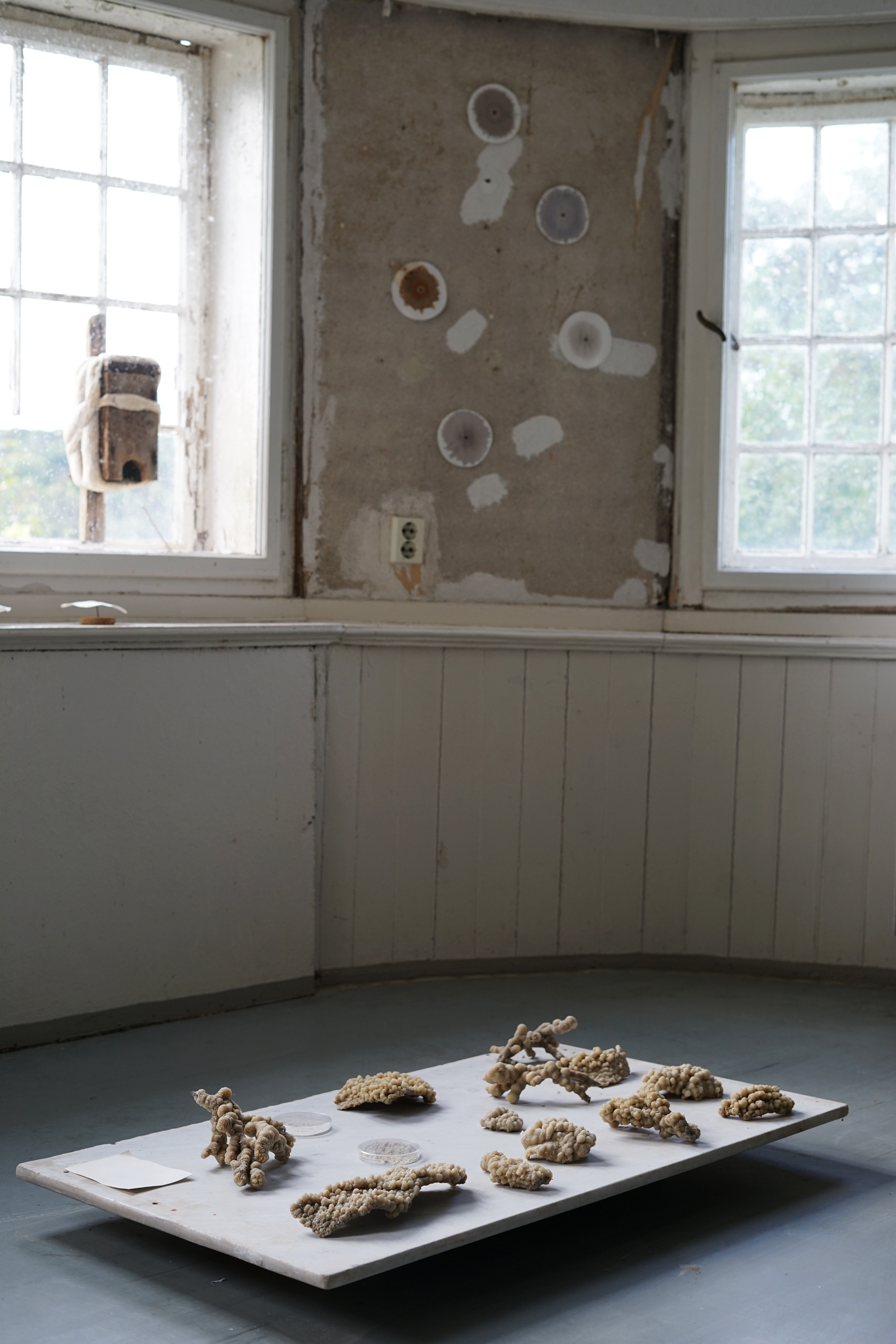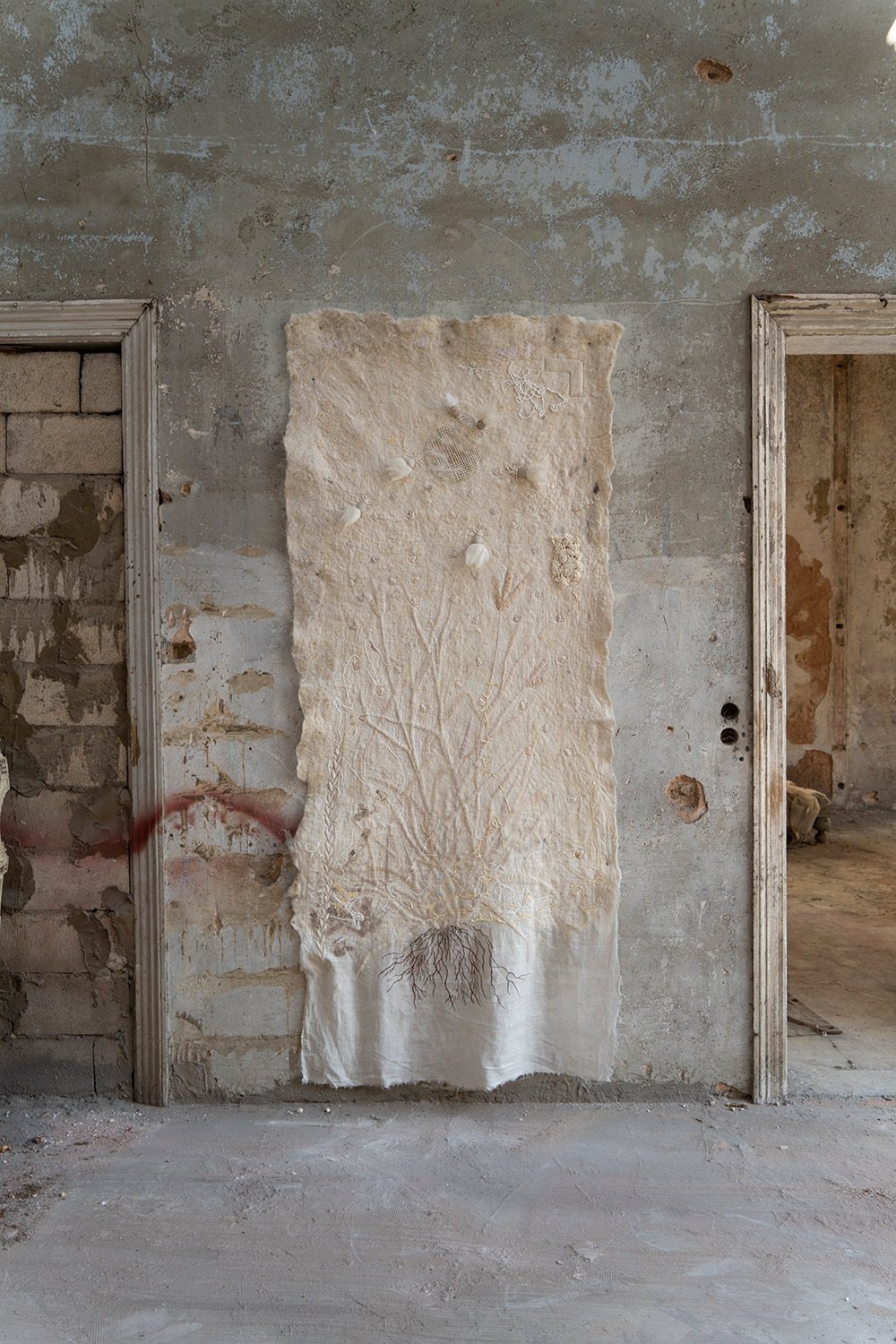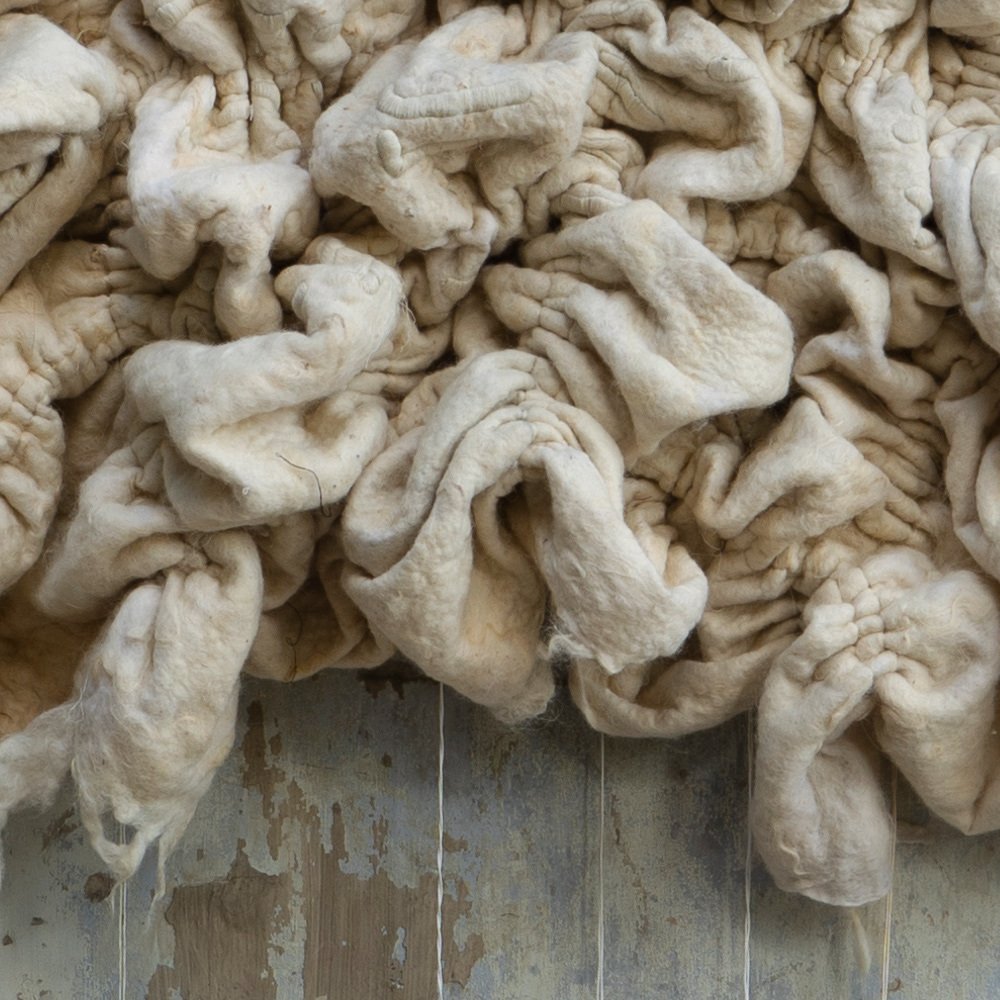Designing Metabolic Relations
The dieDAS 2022 Fellowship Program
Adrian Pepe, Giulia Pompilj, Nico Alexandroff and Steffie de Gaetano
Chromatographies created with the mineral samples from the Gradierwerk Bad Kösen
Every summer at the Saalecker Werkstaetten, Saxony-Anhalt (Germany), a group of designers meet for the dieDAS Fellowship. Using the lens of regenerative design, the fellowship program functioned as a space for critical, creative production and encouraged fellows to actively question dominant narratives and traditional practices by dissecting ideas, concepts, and techniques.
In 2022, four renowned designers, Giulia Pompilj, Nico Alexandroff, Steffie de Gaetano, and Adrian Pepe,were selected for the fellowship. Working closely with prestigious mentors, they explored the theme of Designing Metabolic Relations, conceived by dieDAS Artistic Director Maurizio Montalti.
These designers were already well-known for their research in exploring materials and colours, but the fellowship allowed them to delve deeper into their craft. They used the workshop to collaborate and create together, resulting in an exhibition titled In/un becoming.
The exhibition was showcased at the 2022 dieDAS walk + talk summit held at the historic site of Saalecker Werkstaetten, as well as at the 2022 Dutch Design Week in Eindhoven, Kazerne. This exhibition offered an insight into the designers' thought process, their approach to regenerative design, and their exploration of metabolic relations.
The dieDAS Fellowship is an essential initiative in encouraging designers to use their craft to question traditional practices and consider the impact of their work on the environment. Through the fellowship, the designers have an opportunity to hone their skills and delve deeper into their craft while focusing on regenerative design. It is a critical platform that provides a unique experience to designers looking to create a positive impact in the world.
Chromatographies, pigments and mineral samples from the Gradierwerk Bad Kösen
“In/un becoming has been curated based on the rates of metabolism that we have observed, from plant and fungi species to soil and mineral samples. We have reduced these into essential colours through the processes of natural dying and pigmentation, additionally visualising chemical components via chromatographies. We have captured the hidden digestive mechanism of the building through mycelium imprints and crystalised found objects to similarly explore the stratification of time. We endorsed the metabolic processes by embracing the ephemerality of the colours and the perpetually changing forms.
In light of the imminent conservation of the building, we propose the exhibition as a reminder of the transience of ideological beliefs embedded into architecture as well as its physicality.”
Chromatographies, unfixed dyed wool and pigments from crushed minerals gathered from a local quarry
Learn more about the previous work of the designers and researchers invited to participate in the fellowship 2022:
Adrian Pepe
Adrian Pepe is a Beirut-based fibre artist whose practice explores craft through sociocultural, ecological, and methodological perspectives. His most recent projects focus on the textile practices of the Levant; he has worked closely with artisans in the region, reviving ancient craft techniques and weaving them into contemporary expression.
Entangled Matters by Adrian Pepe
Entangled Matters by Adrian Pepe
Giulia Pompilj
Italian designer Giulia Pompilj specializes in material explorations that combine biology and craft. She focuses her practice on ethnobotanical research, natural dye processes, and the relationships between inhabitants and their environments.
Pompilj's projects have considered the relationship between ecosystems and colour, the implications of dye processes in the fashion industry, and potential applications for pineapple fibre, among others.
Nico Alexandroff
Born in Hong Kong, Nico Alexandroff is a research-driven architect and spatial designer. His work explores the entangled relationships between politics, ecology, and Earth system science, mainly focusing on how aesthetics can be harnessed to inspire action to combat the climate crisis. His multidisciplinary work takes various forms, telling stories through film, exhibitions, writing, and fabrication. Alexandroff is currently pursuing his PhD at the Royal College of Art; his focus is on cosmologies of ice concerning climate collapse.
Permeance by Steffie de Gaetano
Steffie de Gaetano
The Dutch-Italian researcher Steffie de Gaetano is dedicated to a research-driven, interdisciplinary approach that combines architecture, anthropology, and art framed through postcolonial and more-than-human lenses. Her work highlights the connections between modernity and colonialism, which have ongoing ramifications on our present-day social and environmental crises.
In 2021, de Gaetano founded Studio Ditch, an artistic research practice focused on bridging environmental degradation to colonial legacies through traces left by material flows, organic matter, and beyond-human indices.
INFO
dieDAS – Design Akademie Saaleck
Instagram @design_akademie_saaleck
Adrian Pepe
Giulia Pompilj
Nico Alexandroff
https://pgr.rca-architecture.com/people/nico-alexandroff
Steffie de Gaetano
'Permeance' zine digital download HERE
Words
dieDAS and Nina Zulian






